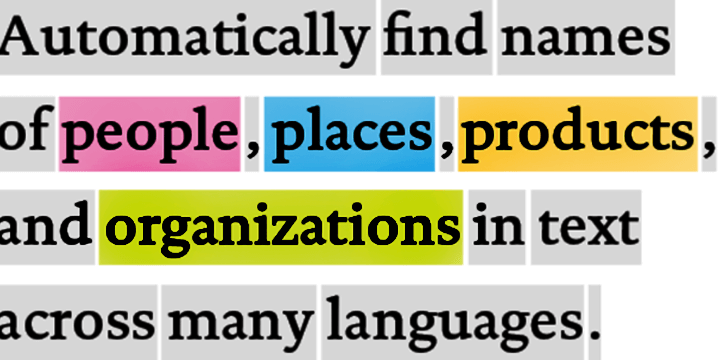Named Entity Recognition (NER) is a crucial task in Natural Language Processing (NLP) that involves identifying and classifying named entities in text into predefined categories such as names of persons, organizations, locations, expressions of times, quantities, monetary values, percentages, etc. In this blog, we’ll create a simple NER system using Python and the SpaCy library.
What is Named Entity Recognition?
NER is the process of detecting and categorizing key information (entities) in a text. This can be used in various applications like information retrieval, content classification, and as a preliminary step in many complex NLP tasks.
Setting up the Environment
First, ensure you have Python installed. Then, install SpaCy, a powerful and easy-to-use NLP library, and its English model:
pip install spacy
python -m spacy download en_core_web_sm
Implementing NER with SpaCy
SpaCy makes it extremely straightforward to build an NER system. Let’s dive into the code:
Importing the Library and Loading the Model
import spacy
# Loading the English model
nlp = spacy.load('en_core_web_sm')
Processing Text
text = "Apple is looking at buying U.K. startup for $1 billion"
# Processing the text
doc = nlp(text)
Extracting Named Entities
for entity in doc.ents:
print(entity.text, entity.label_)
This code will output the detected entities and their labels, like ‘Apple’ as an ORG (organization), ‘U.K.’ as GPE (Geo-Political Entity), and ‘$1 billion’ as MONEY.
Customizing the NER System
While SpaCy’s default NER model is robust, you may sometimes need to customize it to suit specific needs, especially when dealing with domain-specific text.
Training Your Own NER Model
SpaCy provides a convenient way to train your NER model. However, it requires a dataset of annotated examples. Here’s a simplified version of how you can train your model:
import random
from spacy.training import Example
# Preparing training data
TRAIN_DATA = [
("Walmart is a leading e-commerce company", {"entities": [(0, 7, "ORG")]})
]
# Updating the model
for _, annotations in TRAIN_DATA:
for ent in annotations.get("entities"):
doc.ents = [doc.vocab.strings[u"ORG"]]
example = Example.from_dict(doc, {"entities": annotations.get("entities")})
nlp.update([example], drop=0.5, losses={})
# Saving the updated model
nlp.to_disk("/path/to/model")
This code trains the NER model to recognize new entities in the provided training data.
Applications of NER
NER systems are widely used in various domains:
- Information Retrieval: Enhance search algorithms.
- Content Recommendation: Classify content for better user recommendations.
- Data Analysis: Quickly extract key information from large datasets.
Named Entity Recognition is a powerful tool in the NLP toolkit. By understanding and implementing NER, you can extract a wealth of information from text, making it a valuable asset in data analysis and content processing tasks. With libraries like SpaCy, Python makes it accessible to build and customize NER systems, even for those who are relatively new to NLP.


